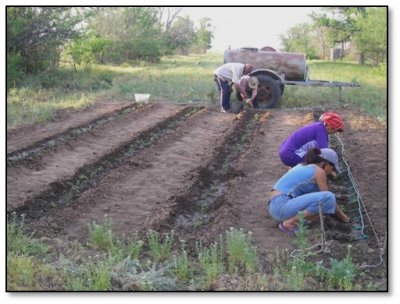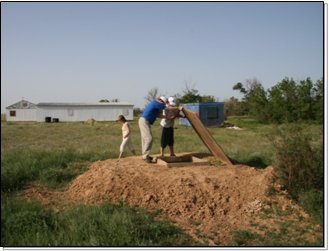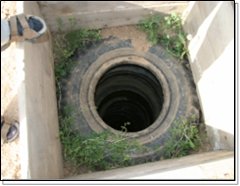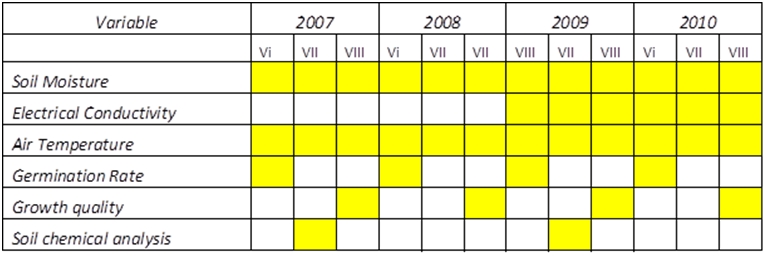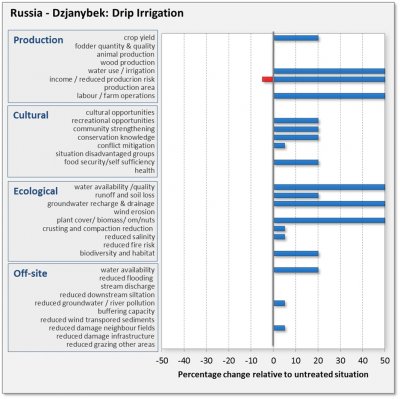| Drip irrigation: experimental results and conclusions |
 |
|
The irrigation of crops in this region (situated at about 100 km from Volga River and very scarce local resources of fresh water) was stopped in early 2000 due to increasing of costs for water delivering strongly linked to high price for energy. Working equipment was sold, the old units finally broke down. Water storage capacities at the territory were absolutely dry for already 4 years from beginning of project activities. Before, they were used to be filled with snowmelt waters. Unprofessional vegetable farming for domestic use is also under threat. High evaporation and shallow groundwater lead to salinization of the soil. This and declining water resources affects people's income by decreasing food production. Nowadays the main income of the stakeholders is agricultural production from their garden plots (fruits and vegetables), growing cattle (sheep and cows). There is a big agricultural conglomeration – farm “Romashkovsky”. A number of people are working in this farm and their salary depends on its production. The young generation is leaving rural areas due to level of life and possibilities to find more income in the urban area. Lack of information about sustainable land management, climate instabilities and weak institutional support with low financial support from the governmental organization making life of people in this region difficult. The experiment focusses on testing drip irrigation as a water conservation practice while generating a viable crop yield.
Field trials were carried out aiming to test drip irrigation technologies in different field conditions and sources of irrigation water. The groundwater in this region is the receiver of surface water (in general after snow melting) and the depth and concentration is determined by the micro-relief. Under micro-depressions the surface of groundwater is convex with depth about 2 - 5 m and mineralization about 0,3-1,4 g/l. Under micro-elevations the surface of ground water is concave with depth about 3 - 9 m and mineralization about 4-17 g/l. It has to be used with care.
At each experimental site a drop irrigation networks were assembled of hose pipes of drop irrigation (produced by “Rosinka”) for each rank with the distance 0.3 m between the droppers, a output from tank/cistern was installed on about 1 meter height to water distribution system.
Tank for the underground storage of snowmelt water for drip irrigation. The meltwater forms a sweetwater lens on top of the brackish groundwater. The experimental plots irrigated by drip irrigation technology were established and monitored during growing seasons from 2007 till 2011 at the same time and at the same fields in parallel with experiments with furrow irrigations. They were equipped with 4 boreholes providing access to capacitance soil moisture sensors measuring soil moisture till 40 cm. During all five experimental seasons a continuous drip irrigation applications were proceeded and data on soil moisture were recorded as well as meteorological parameters were recorded by automatic weather station located near these plots.
Drip irrigation is a profitable irrigation practice since it provides opportunity to get fresh vegetables with a small amount of applied water and workload, but implementation and maintenance costs are high obstacles for large application of it. However, the main bottleneck is the cost of installing drip irrigation systems. Without subsidy this technology will not be broadly used.
|
|||||||||||||||||||||||||||||||
Study sites
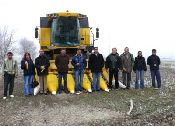
Acknowledgement
The DESIRE project was
|
DESIRE brought together the expertise of
26 international research institutes
and non-governmental organisations.
This website does not necessarily
represent the opinion of the
European Commission. The European
Commission is not responsible for
any use that might be made of the
information contained herein. 


